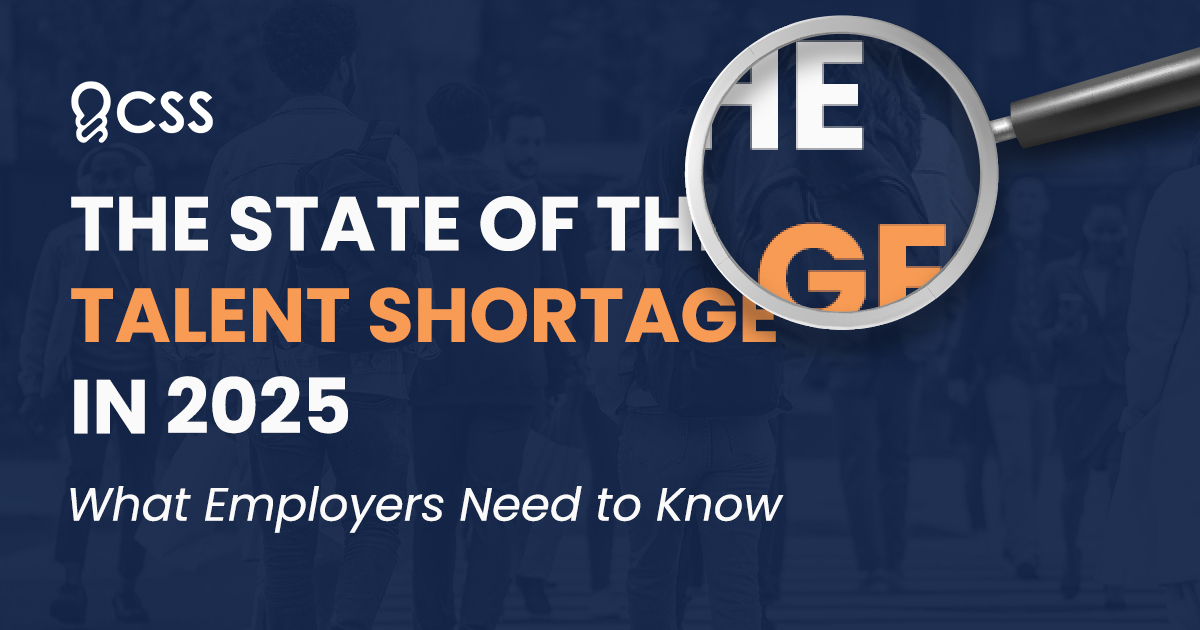What Employers Need to Know
If you’re leading HR or Talent Acquisition today, you’re likely familiar with this refrain: “We can’t find enough qualified candidates.” The talent shortage isn’t new—but in 2025 its shape is changing. Skills demands are shifting, candidate expectations are higher, and competition for niche talent is fiercer than ever. To stay ahead, organizations need to understand what the data is showing—and then lean into proven strategies, including partnering with staffing experts who bring deep industry insight. Here’s what the latest data is telling us, and what HR/TA leaders can do differently.
What the Data Tells Us
1. Recruiting Difficulties Are Still Widespread
According to the 2025 Talent Trends report from SHRM, about 69% of organizations report significant difficulties filling full-time, regular positions. That figure is roughly where organizations were around 2016, and though it has eased somewhat from the peaks seen during 2021–2022, it’s still a big challenge.
2. New Skill Requirements Are Rising Fast
- Over 28% of organizations say that full-time roles now require new skills compared to previous years.
- Nearly 47% of those are updating existing job descriptions or roles to include these new technical or soft-skill demands.
- Among the top new skill needs: data analysis (36%), AI / machine learning (31%), and cybersecurity (21%).
3. Fastest-Growing Occupations Point to Where Demand Is Strongest
The U.S. Bureau of Labor Statistics s projects that between 2024 and 2034:
- Data scientist jobs are expected to grow by ≈ 34% with median pay around $112,600/year.
- Information security analysts are projected to increase by ~29% in the same period.
- Healthcare-adjacent roles, such as medical and health services managers, are also seeing strong growth (~23%) as demand in health care and social assistance grows.
4. Emerging Strategies and Responses Are Materializing
- SHRM reports 35% of organizations are now using internal talent marketplaces—platforms that match employees’ skills/interests with roles or projects inside the same company. That’s up from ~25% in 2024.
- Flexible work arrangements, upskilling existing employees, and improving employer branding remain among the top strategies organizations are using to attract talent.
- AI is increasingly adopted in HR functions: screening, learning & development, recruiting, etc. The challenge many organizations say is balancing algorithmic efficiency with human judgment, fairness, and candidate experience.
What This Means for HR & TA Leaders

Given these shifts, here are key implications for organizations—and how putting CSS in the mix can help.
Reframe your value proposition as an employer
The modern candidate is looking for more than just a pay-check. Flexibility (remote/hybrid), learning opportunities especially in tech and digital skills, and alignment with company values are now central. Implicitly, this means companies that can clearly communicate what makes them different (culture, development, stability, mission) are winning. CSS helps clients by not just sourcing talent, but helping articulate what makes them attractive to niche candidates—especially in fields like IT, Accounting & Finance, and Life Sciences.
Build capabilities internally & upskill aggressively
Since many roles are being edited to include new skills, organizations that build robust learning and development (L&D) programs, or create internal mobility pathways, tend to fare better. For example, internal talent marketplaces (which 35% of orgs have adopted as of 2025) help identify internal candidates who may be ready or nearly ready for evolving roles. CSS works with clients to help define competency models, identify gaps in their existing workforce, and sometimes even source contract/temporary talent while they upskill their permanent team—minimizing disruption.
Widen the search & source more creatively
Passive candidates, under-represented groups, non-linear career paths—these are where opportunity often lies. Skills-based hiring (versus degree-only) is also growing in relevance. Staffing partner firms like CSS that maintain deep vertical networks can unearth candidates outside the usual channels. Also, temp, contract, or interim hires can give breathing room while you search for the exact match—while still moving key work forward.
Modernize hiring processes for efficiency & candidate experience
- Speed matters: slow processes lead candidates to drop out.
- Communication matters: transparent status updates, realistic timelines.
- Assessment matters: screening tools that test for both technical ability and soft skills (stakeholder communication, adaptability).
CSS has refined its candidate vetting for niche roles over decades, which means we often deliver more accurate shortlists more quickly—helping reduce time-to-fill while preserving candidate experience.
Key Takeaways
The talent shortage isn’t going away—but it’s not the same monster it was even a few years ago. The winners in 2025 will be those who adapt—who recognize skills are shifting, who offer compelling experiences to candidates, who invest in current employees, and who partner smartly to fill both short- and long-term gaps.
For HR and TA leaders, bringing in a partner like Contemporary Staffing Solutions can make a difference. With specialty verticals (IT, Accounting & Finance, Life Sciences, Executive Search, and more), proven screening processes, and deep networks, CSS helps close skill gaps, reduce time-to-fill, and ensure that you’re hiring not just fast—but smart.
About Contemporary Staffing Solutions
With five specialized business lines, Contemporary Staffing Solutions delivers flexible, high-impact workforce solutions — from direct hire and temporary staffing to executive search, scientific talent, tech recruiting, and outsourced project-based support. Our teams adapt to client needs with scalable models that include contingent, permanent, and managed solutions.

